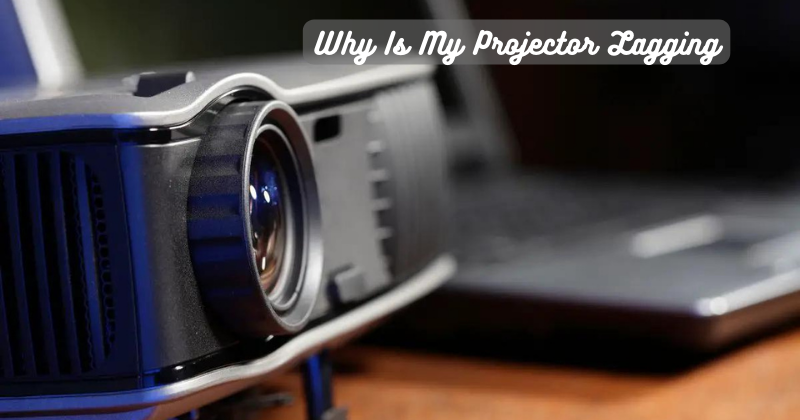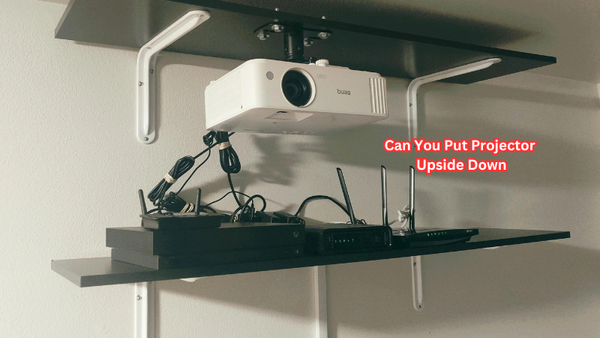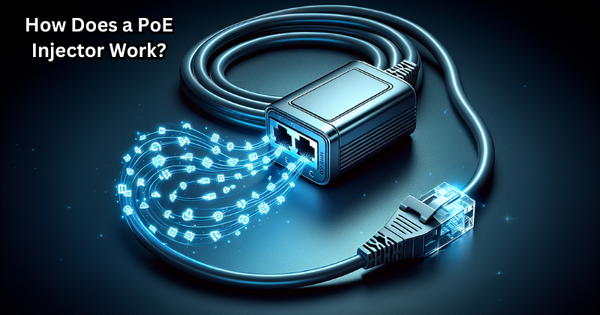Introducing the perplexing issue of projector lag—an inconvenience that disrupts the seamless flow of visual content and leaves users frustrated.
As we increasingly rely on projectors for presentations, entertainment, and educational purposes, the occurrence of lag becomes a pressing concern. This delay in image or video display can hinder the overall user experience, creating disruptions that are particularly noticeable during fast-paced scenes or critical presentations. Understanding the reasons behind projector lag is crucial for troubleshooting and optimizing performance.
Factors such as hardware limitations, incompatible cables, or software glitches may contribute to this latency, demanding a comprehensive examination to pinpoint the root cause. In this exploration, we delve into the intricacies of projector lag, seeking solutions to ensure a smooth and uninterrupted visual experience.
What & Why Is My Projector Lagging: Identifying the Causes
Lagging in the context of projectors refers to the delay between a command or input and the corresponding response from the projector. This lag can manifest itself in various forms, such as slow loading times, stuttering visuals, or delayed audio output. In essence, lag affects the overall performance of a projector, resulting in an unsatisfactory user experience.
Here are some common causes of projector lag that may be affecting your device's performance:
Input Source:
The device providing the input signal may have compatibility issues with the projector, resulting in lag. This is often seen when using older devices or different output resolutions. Reduce input lag by using a device with a higher output resolution, upgrading to an HDMI connection, or using adapters if necessary.
Noticeable input lag may also occur when using wireless display technologies, such as Miracast or Chromecast, which can introduce a delay due to the transmission process. Wireless connections may be convenient, but for optimal performance, a wired connection is recommended.
Resolution and Refresh Rate Mismatch:
Mismatch between the projector's native resolution and that of the input signal, or a low refresh rate can cause lag. This is especially common when projecting high-definition content, such as Blu-ray movies or gaming consoles. Ensure that your input source is set to the correct resolution and refresh rate for optimal performance. Audio synchronization settings may also cause lag between sound and image, resulting in a noticeable delay. Adjusting these settings or using external speakers can resolve this issue.
Projector lagging can also be attributed to outdated or incompatible graphics drivers on your computer, resulting in a mismatch between the display and refresh rates. Updating your drivers or adjusting the settings may help alleviate this issue. Video lag may also occur due to insufficient RAM or processing power, especially when using multimedia-heavy applications.
Processing Power:
The processing power of the projector itself may also be a contributing factor to lag. Lower-end projectors or those with outdated technology may struggle to keep up with high-resolution content, resulting in delays. Consider upgrading to a higher-quality projector if this is consistently an issue.
Projector's settings such as image enhancement or keystone correction can also affect processing power and contribute to lag. Disable any unnecessary features to reduce the strain on the projector's processor. Measure input lag through an online test tool to determine the impact of these settings.
Overheating:
Overheating is a common issue that can impact the performance of any electronic device, including projectors. When the projector's components become too hot, it may cause lag or shut down entirely to prevent damage. Ensure proper ventilation and cleaning of dust build-up on the projector to avoid overheating issues.
Laptop or gaming console overheating can also cause lag when projecting content, as the device may throttle performance to prevent overheating. Use cooling pads or adjust the power settings on your device for better performance.
Signal Interference & Connection Cables
Wireless projectors or those using Wi-Fi connectivity may experience lag due to signal interference from other devices. Avoid placing the projector near sources of interference, such as routers, microwaves, or Bluetooth devices. Using wired connections can also help reduce the impact of signal interference. Gaming mode on projectors can also reduce input lag by prioritizing the connection between the input source and the projector.
Poor quality or excessively long cables can cause signal degradation, leading to lag. Ensure that you are using high-speed HDMI cables and that they are not damaged or too long for the signal to pass through efficiently. Using an HDMI repeater or extender can also help maintain the quality of the signal over longer distances.
Distance and Alignment:
The distance between the projector and the screen, as well as proper alignment, can greatly impact performance. Using an outdated or incorrect projection ratio may result in a distorted image, causing lag. Consult your projector's manual for the optimal distance and position to ensure clear and smooth projection. Minimize input lag by using a shorter HDMI cable and avoiding unnecessary adapters. Aspect ratio manipulations might also cause lag, so stick with the projector's default settings for optimal performance.
Fix sound delay by adjusting the audio delay settings on your device or using external speakers. For interactive projectors, ensure proper alignment and calibration for accurate touch response and minimal lag. Address sound delay by adjusting the audio delay settings on your device or using external speakers.
Hardware Issues & Firmware and Software:
In rare cases, hardware issues with the projector, such as malfunctioning parts, may cause lag. In these instances, it is best to contact the manufacturer for repairs or replacement.
Firmware and software glitches can also contribute to projector lag. Check for any available updates and install them to ensure optimal performance. Input lag reduction settings and game mode options are often found in the projector's firmware, so keep an eye out for those as well.
These are some of the common causes of projector lag, and they can vary depending on the type and model of your device. By identifying the root cause, you can take appropriate steps to resolve the issue and enjoy a seamless viewing experience every time. In the next section, we will discuss some potential solutions to reduce projector lag and improve overall performance.
How to Fix Projector Lag: Troubleshooting Steps
Here are some troubleshooting steps to help resolve projector lag issues:
- Ensure proper alignment and distance between the projector and screen.
- Use high-quality HDMI cables and avoid excessively long or damaged ones.
- Update graphics drivers on your computer or adjust settings for optimal performance.
- Disable unnecessary features on the projector, such as image enhancement or keystone correction.
- Keep the projector's components clean and provide adequate ventilation to prevent overheating.
- Low input lag settings and game mode options can be found in the projector's firmware.
- Check for any available firmware or software updates and install them.
- Use gaming mode or wired connections for reduced input lag.
- If your projector offers a gaming mode, enable it to prioritize the connection between your input source and the projector.
- Consider upgrading to a higher-quality projector if low processing power is consistently an issue.
If these steps do not resolve the issue, it may be necessary to consult a professional technician or contact the manufacturer for further assistance. By identifying the cause of your projector lag and taking appropriate steps, you can enjoy a smooth and seamless projection experience.
How To Fix Sound Delay On Projector
Sound delay can also be a common issue when using projectors, especially for interactive or gaming purposes. Here are some steps to help reduce sound delay:
- Adjust the audio delay settings on your device.
- Use external speakers for improved sound quality and synchronization.
- Ensure proper alignment and calibration of your interactive projector for accurate touch response.
By following these troubleshooting steps, you can minimize both input and sound lag for a more enjoyable viewing experience. So, it is essential to take care of your projector and troubleshoot any issues promptly to maintain its optimal performance.
How to Keep a Projector From Lagging
To avoid projector lag in the future, here are some tips to keep in mind:
- Regularly clean and maintain your projector to prevent dust build-up and overheating.
- Use high-quality cables and ensure proper alignment between the projector and screen.
- Keep software and firmware updated for optimal performance.
- Avoid placing the projector near sources of signal interference.
- Consider investing in a higher-quality projector for better processing power and performance.
By following these tips, you can prevent or minimize the occurrence of lag in your projector and enjoy a seamless viewing experience every time. As technology continues to advance, projectors are becoming more powerful and efficient, reducing the likelihood of lag.
FAQs
Do projectors have lag for gaming?
Yes, projectors can have lag for gaming due to the processing power of the device and other factors such as signal interference or outdated firmware. However, many modern gaming projectors offer features like gaming mode to reduce input lag and improve performance.
How much latency does a projector have?
The amount of latency or input lag in a projector can vary depending on the device's model and specifications. Some high-end projectors may have as little as 10-15 milliseconds of lag, while others may have up to 100 milliseconds or more.
What FPS do projectors use?
Projectors typically use a standard of 60 frames per second (FPS) for video playback. However, some high-end projectors may offer higher frame rates such as 120 FPS for smoother and more realistic motion. It is important to check the specifications of your projector to determine its maximum FPS capabilities.
What is the average input lag for a projector?
The average input lag for a projector can range from 30-50 milliseconds, although it ultimately depends on the specific device and its settings. Factors such as signal interference, outdated firmware, or using low-quality cables can also contribute to increased input lag. Consult your projector's manual or conduct research on its specifications to determine its average input lag.
Conclusion
In conclusion, understanding the reasons behind your projector lag is essential for resolving the issue and ensuring a smooth projection experience. Weak or unstable connections between your video source and the projector, outdated firmware or software, high-resolution settings, and insufficient processing power are all potential causes of lag. By troubleshooting these factors, such as checking and securing your cables, updating firmware and software, adjusting resolution settings, and optimizing the processing power of your devices, you can address the lagging problem effectively.
Additionally, keeping your projector well-maintained, ensuring proper ventilation, and avoiding excessive heat can contribute to smoother performance. Regularly cleaning the projector's lens and filters can also help prevent lag caused by dust or debris.
By taking these proactive steps, you can overcome the challenges of projector lag and enjoy seamless, uninterrupted projection for your movies, presentations, and other multimedia needs. So, dive into the troubleshooting process, identify the root cause, and optimize your projector's performance for an enhanced viewing experience.





